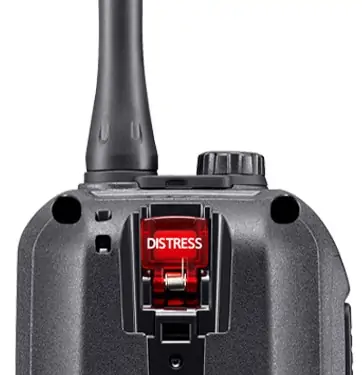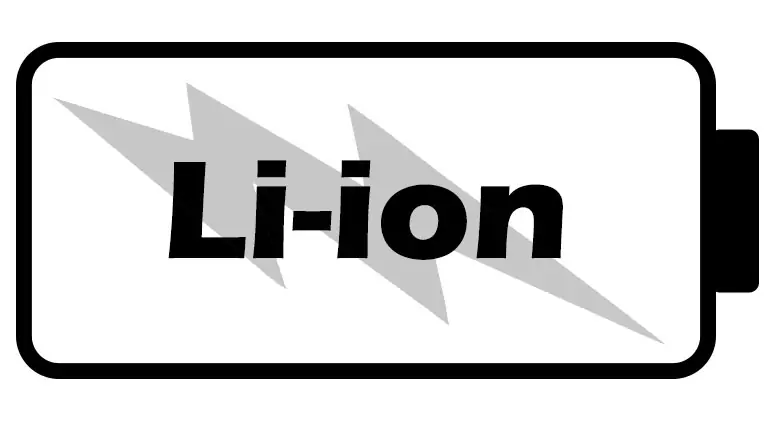Description
The Standard Horizon HX890E Handheld Floating VHF Radio with Class H DSC and GPS is the successor to the best selling HX870E. Available in two colour options and with some prominant new features.
These include: Two scrambler systems built in, both a 4 code CVS2500A and a 32 code FVP-42 scrambler system ensure secure communications out on the water. Another new feature includes a built in FM Broacast band receiver, during times when radio communication is not necessary, relax with some music on the FM Radio broadcast bands.
Other notable features include: Floating and submersible to IPX8, switchable daytime or nighttime mode, waypoint and route navigation, group monitor function utilizing DSC Group position call. The new Standard Horizon HX890E has also been redesigned with a new ergonomic case design, and has been rigorously tested to conform with the Militay Standard (MIL-STD-810F). The feature packed HX890E comes packaged with all the accessories including the rechargeable Li-Ion battery, Alkaline battery tray, 220V charger, charging cradle, 12V charger, PC programming cable and belt lip with lanyard, and it’s backed by Standard Horizons industry leading 3 year waterproof warranty.
Features:
- 6W transmit power output (Selectable 6/ 2/ 1 W)
- 700mW Loud Audio and Noise Canceling Function for both TX/RX audio
- Rugged case construction conforms to Military Standard (MIL-STD-810F)
- Available in Navy Blue or Black
- Submersible IPX8 Construction and it floats
- DSC (Digital Selective Calling) ITU-R M.493 Class-H Operation
- W2.60’’ x H5.43’’ x D1.50’’ – Round Case Design provides excellent ergonomics
- Built-in Integrated 66 channel WAAS GPS Receiver
- 11-hour Operating Time with 1800mAh high capacity Li-ion battery
- Easy to Operate Menu System with a large (1.7’’ x 1.7’’) Full-dot matrix display
- Selectable Display Mode – Day & Night Mode
- Waypoint and Route navigation
- Group Monitor Function utilizing DSC Group Position Call
- MOB (Man over Board) feature
- Water Activated Emergency “WHITE” Strobe Light
- Two Scrambler Systems built-in – 4-code CVS2500A & 32-code FVP-42
- Versatile Scanning operation (Dual Watch and Triple Watch)
- NOAA Weather Channels with Weather Alert
- FM Broadcast Radio Receiver
- Micro USB Data jack for PC programming
- 3 Year Waterproof Warranty
Please note: Only one radio is supplied.
Find out more about the different types of handheld VHF radios below and their specific features with our expert’s guide on how to choose the best handheld VHF radio for your needs:
How to choose the best Handheld VHF Marine Radio

From simple communication devices, VHF radios have evolved into essential safety equipment. We now have models that have built in GPS, DSC, AIS, voice recording and even Bluetooth! In this guide we will be discussing handheld VHF radios, although it is important to know that they are not the only type.
What are the different types of VHF?
There are two main types of VHF radio. Either fixed mounting or handheld.
Fixed Mounting

This is usually the main VHF for the vessel. It is mounted in the vessel and wired up to a power source (usually 12v) and a VHF antenna. Fixed radios have 25 watts of power and are capable of broadcasting over a considerable distance. See our range of fixed VHF marine radios.
Handheld

These radios are portable and have their own internal battery / antenna. Handheld radios have up to 6 watts of power and are suitable for short range use. They are ideal for vessels that do not have power, water sports or just to keep on your person. See our range of handheld VHF radios.
Which Handheld VHF Radio is best for me?
This answer will depend greatly on the type of boating or activity you are using the radio for.
In terms of just communication, most handheld VHF radios do same thing. You transmit by pressing the push to talk (PTT) button and you can hear others transmitting on selected channels. What really set the radios apart are the additional features and specifications.
It is these specifications below that will determine the best radio for you.
Floating
Many radios can now float. Some even have lights that flash once dropped into the water to aid retrieval. This function is ideal for a wide of range of activities, especially water sports where you are likely to be more active with a greater chance of dropping the radio. Floating radios are a bit bigger than non-floating radios due to the space needed for buoyancy chambers.
Floating radios can be found HERE


DSC (Digital Selective Calling)
Digital Selective Calling is a way of sending an individual call to another VHF user or to send an automatic distress message. DSC radios have a dedicated distress button that once pressed will send a distress signal to all vessels within range. VHFs that have DSC will also have a GPS receiver built in. To operate a DSC radio, you will need to have an MMSI number either personal or for the vessel (See further down the page for more details).
Example of DSC radios are: Icom M94DE, Standard Horizon HX890E or Cobra HH600
AIS Receiver
Automatic Identification System (AIS) is an automatic tracking system designed to aid in collision avoidance. The system consists of transponders and receivers which plot vessel locations on a display.
All commercial vessels over 300 tonnes and passenger vessels are required to transmit their location through a class A transponder. Leisure vessels are also able to transmit their location via a class B transponder if they wish.
The icom M94DE is the world’s first marine VHF handheld radio with an integrated AIS receiver. This shows both class A and B vessels plotted around your current position.


Voice Recording
Some radios can even record the last transmission received. This will stop you from missing an important message or asking the sender to repeat themselves.
Radios with this feature are the icom M73 Plus and Cobra HH600.
Additional Features
Whilst the above are the main features that will help you decide which radio to purchase, there are a few other specifications you will see while you are shopping.
Wattage (Transmitting Power)
The wattage of a radio refers to its transmitting power. In theory the higher the number, the further the transmitting range of the VHF. As a rule of thumb 1 watt = 1 Nautical Mile assuming there are no obstructions. Most radios have a selectable wattage, usually Low/High. This is useful when you are only transmitting over a short distance as it saves power and won’t block other users a few miles away using the same channel.
Most Handheld VHF radios have a maximum of 5 or 6 watts.


Battery Capacity / Technology
The capacity on most batteries is measured in milliampere hours (mAH). Normally the higher the capacity, the longer the device will last, although this is dependent on environmental factors and the internal circuitry of the device.
The technology used in batteries has improved drastically over the last ten years. There was a time when all handheld VHF radios were powered by Nickel-cadmium (Ni-Cad). These suffered from what they call ‘memory effect’ where if the battery wasn’t completely drained before recharging it would remember the shortened charge cycle and reduce the batteries capacity.
We now have Lithium Ion batteries which are smaller, have higher capacity and do not suffer from the ‘memory effect’. This means you can top up the battery at any time to keep it fully charged and ready when you need it most.
Waterproofing / IP Rating
Most handheld VHF radios are waterproof and this is measured with an ‘IP’ rating. This stands for International protection or sometimes referred to as Ingress protection. It is represented by the letters IP followed by two alphanumeric characters. The first is the dust rating which doesn’t often apply on marine products so is usually represented with an ‘X’. The second is for liquid ingress which is detailed below.
(All the handheld radios we sell conform to IPX7 or IPX8 which makes them not only waterproof but submersible up to 1m depth).
1 – Dripping water – Dripping water (vertically falling drops) shall have no harmful effect.
2 – Dripping water when tilted up to 15° – Vertically dripping water shall have no harmful effect when the enclosure is tilted at an angle up to 15° from its normal position.
3 – Spraying water – Water falling as a spray at any angle up to 60° from the vertical shall have no harmful effect.
4 – Splashing water – Water splashing against the enclosure from any direction shall have no harmful effect.
5 – Water jets – Water projected by a nozzle (6.3mm) against enclosure from any direction shall have no harmful effects.
6 – Powerful water jets – Water projected in powerful jets (12.5mm nozzle) against the enclosure from any direction shall have no harmful effects.
7 – Immersion up to 1m – Ingress of water in harmful quantity shall not be possible when the enclosure is immersed in water under defined conditions of pressure and time (up to 1 m of submersion).
8 – Immersion beyond 1m – The equipment is suitable for continuous immersion in water under conditions which shall be specified by the manufacturer. Normally, this will mean that the equipment is hermetically sealed. However, with certain types of equipment, it can mean that water can enter but only in such a manner that it produces no harmful effects.
What are the legal requirements for using a VHF radio?
Any device that broadcasts a radio signal from medium to ultra high frequency will require a license to operate. This is essential for all VHF radios. Licensing ensures that radio equipment used on board ships does not cause undue interference to other communications equipment and is operated by competent persons.
In the UK licensing is controlled by OFCOM and more information can be found using the link below.
https://www.ofcom.org.uk/manage-your-licence/radiocommunication-licences/ships-radio
You will also need a marine radio short range certificate (SRC). This is the minimum qualification required by law to control the operation of VHF and VHF DSC equipment.
This certificate involves attending a course either in person or online followed by an exam. More information can be found using the link below to the RYA website.
https://www.rya.org.uk/training/courses/marine-radio-short-range-certificate-course-srcc
Supplied Accessories:
- CAT460 antenna
- SBR-13LI 7.4V 1800mAh Li-Ion Battery Pack
- SBH-32charger cradle
- SAD-25 AC Adapter
- E-DC-19A DC cable with cigarette lighter plug for SBH-32
- SBT-13 alkaline battery case (AAA x 5)
- Clip-22 Belt Clip
- Hand strap and T9101648 USB cable.
See the Product Manual HERE
See below for an unboxing video for the HX890E:







